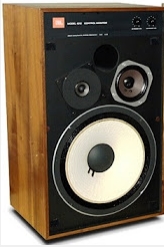Ed's
AV Handbook
Batting Practice for the AV Professional
and primer for the novice
Chapter 3 Page 1
Sound Reproduction
Sound can be store and reproduced for our convenience and
pleasure.
This technological magic begins and ends with ...
The Microphone & The Speaker
The Microphone
Dynamic Microphone
A dynamic microphone manages the acoustical-to-mechanical step via a light diaphragm that mechanically shadows and responds to rarefactions and compressions of sound waves.The mechanical-to-electrical step attaches a light coil of wire to the diaphragm. The diaphragm mounts over and slides the coiled wire into the gap of a magnet-pole assembly. The magnet-pole-assembly surrounds the attached-coil.
Sound waves modulate the
diaphragm-coil assembly. Its modulating magnetic field
produces a corresponding modulating voltage. The voltage, an
analog of the sound waves, then modulates a speaker or feeds
the input of a recording device.

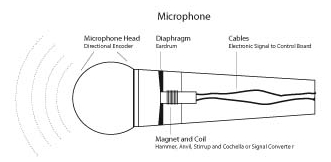


Ribbon Microphone
A ribbon microphone replaces the dynamic microphone diaphragm with a thin metal film placed and framed within a magnetic structure. As the dynamic microphone, the mechanically modulating film within the magnetic field produces a corresponding modulating voltage of the sound waves.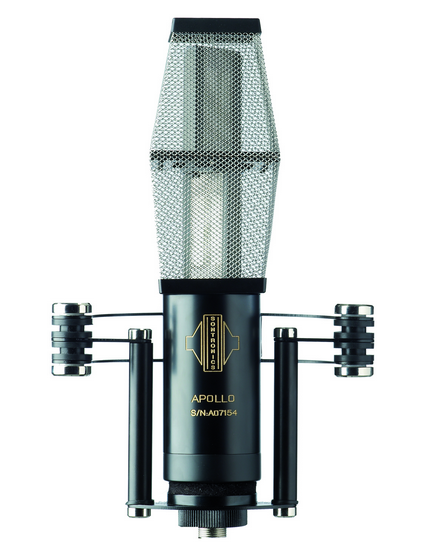
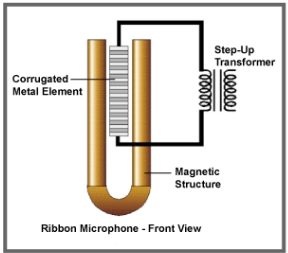
Condenser Microphone
The acoustical-to-mechanical diaphragm of a condenser microphone is essentially one plate of an electrically charged capacitor. The mechanical-to-electrical stage places the diaphragm-plate near a battery-charged electro-magnet back-plate.The modulating distance between the diaphragm and the charged back-plate creates an instantaneous modulating voltage. That voltage is a corresponding analog of the sound waves.

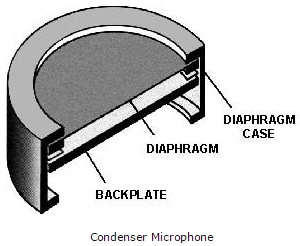
Piezoelectric Microphone
A piezoelectric microphone replaces the coil-magnet assembly with a piezoelectric crystal. The microphone's modulating diaphragm applies pressure to the crystal. The pressure squeezes voltage from the crystal. The voltage is an analog of the sound waves.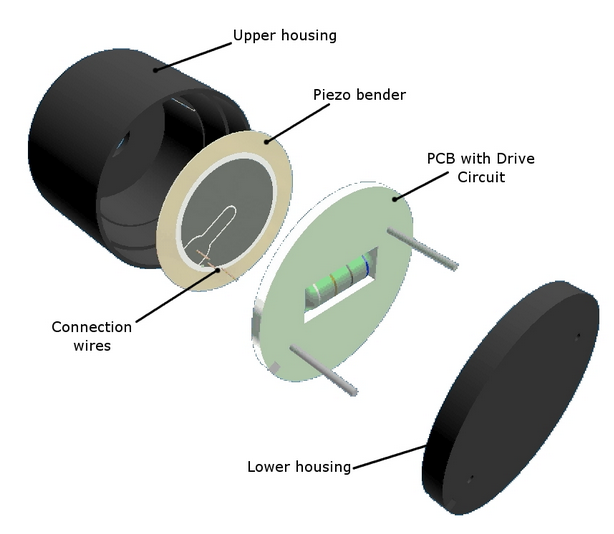
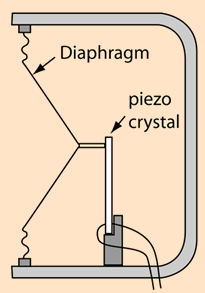
The Speaker
Dynamic
Loudspeaker
The dynamic loudspeaker is the prevailing loudspeaker technology. A voice coil (a tight-coil of wire) is connected to an amplifier. The voice coil, attached to a speaker cone, is placed and aligned into the gap of a fixed magnet. The modulating output voltage of an amplifier continually reverses its polarity. Reversing electromagnetic polarity creates a push/pull effect. The push/pull modulates the speaker cone, which reproduces an analog of the sound waves captured by the microphone.
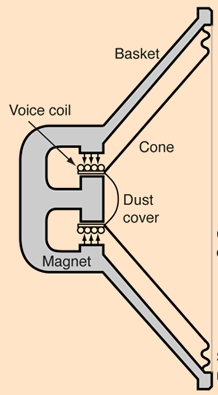
Ribbon Loudspeaker
A ribbon loudspeaker is the inverse of a ribbon microphone. Its electrical-to-mechanical mechanism, a thin conductive flat ribbon of metal foil, is sandwiched between fixed-magnets. The ribbon replaces the voice-coil and speaker-cone of the dynamic speaker. The amplifiers reversing polarity modulates the ribbon, which reproduces an analog of the original sound waves.
Magneplanar
ribbon based Loudspeaker
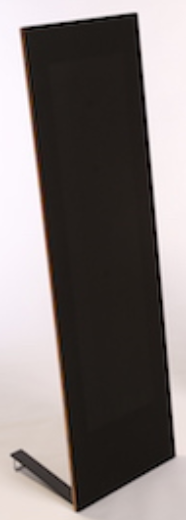
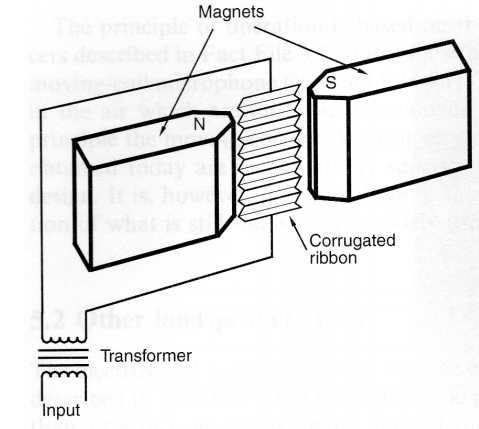
Electrostatic Loudspeaker
As the condenser microphone, an electrostatic speaker is essentially a larger flat capacitor. A thin diaphragm of graphite coated Mylar film sandwiched between two grid-stator-plates. A power supply applies a constant electrical charge, of fixed polarity, to the coated film. The stator-plates connect to an amplifier. The amplifier and stators create an electromagnet field. Amplifier/stator reversing polarity modulates the film, which reproduces the original sound waves.
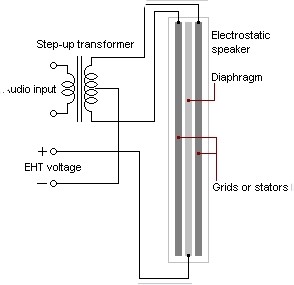
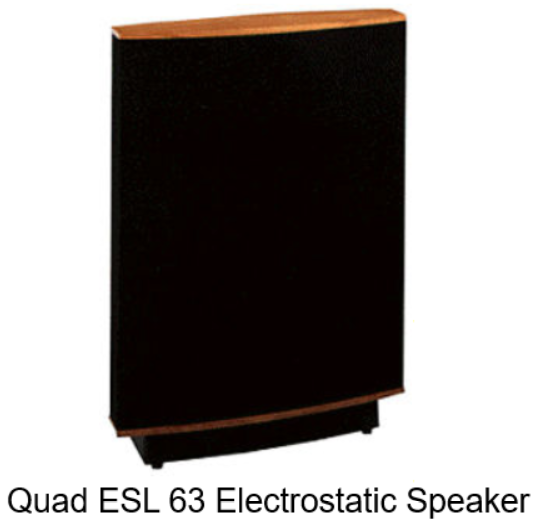
Piezoelectric
Tweeter
The piezoelectric is the inverse of a piezoelectric microphone. In this case, the amplifier's reversing voltage-polarity is applied to the crystal.
The voltage-pressure modulates the crystal surface. The limitations of the surface movement restrict its use to the reproduction of high-frequency sound waves.
The piezoelectric speaker is a tweeter.
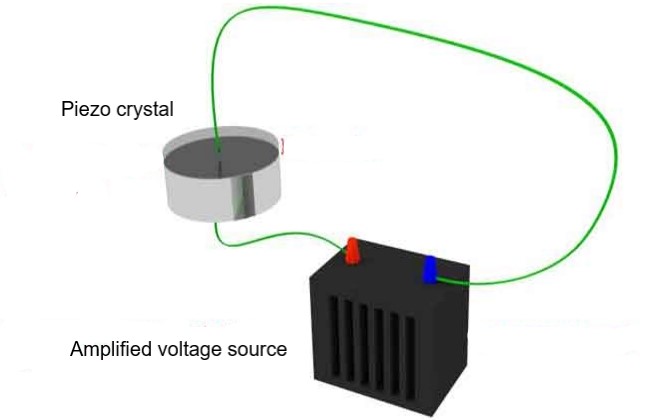
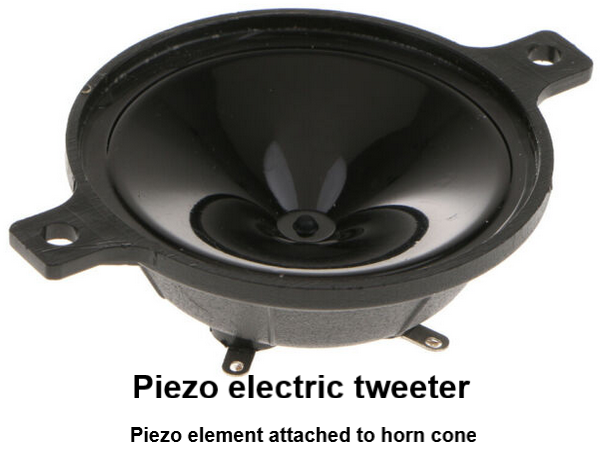
Copyright 2007 Txu1-598-288 Revised 2024
Site Menu
Home
Table of
Contents
AV News & Blog
Handbook Chapters
1 AV
Terms
2 AV Physics
3 Sound Reproduction
4 Video Reproduction
5 The AV System Sequence
6 The Room, Speaker, & TV
7 Acoustical Strategy - Small Room
8 Home Theater by Design
9 AV Sales Training
10 AV Business & Marketing
Contact
About

